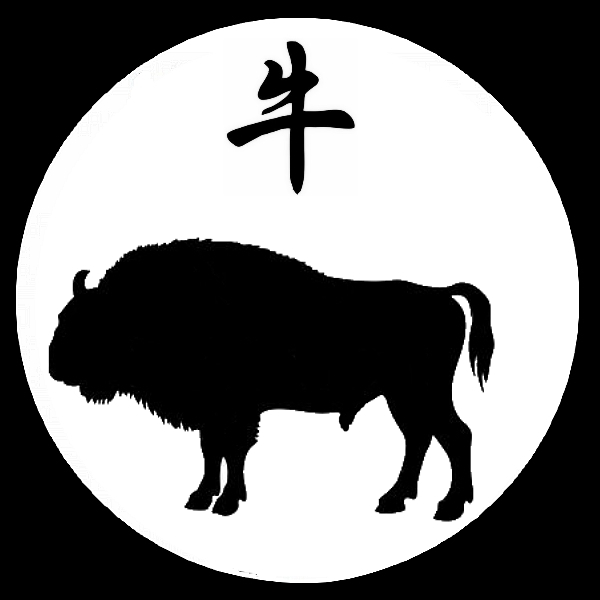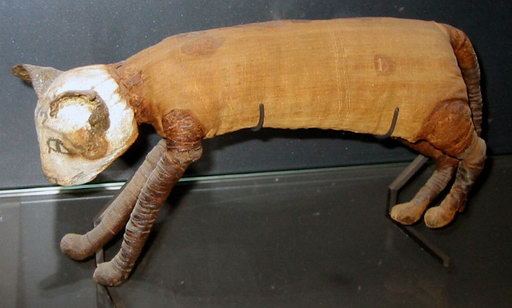|
Vietnamese Calendar
The Vietnamese calendar ( vi, âm lịch; Hán-Nôm: 陰曆) is a lunisolar calendar that is mostly based on the lunisolar Chinese calendar. As Vietnam's official calendar has been the Gregorian calendar since 1954, the Vietnamese calendar is used mainly to observe lunisolar holidays and commemorations, such as Tết Nguyên Đán and Tết Trung Thu. Historical developments After Vietnam regained independence following the third Chinese dominion of Viet-Nam, monarchs established their own calendars based on Chinese prototypes, and every subsequent dynasty had appointed officers to man and create the calendar to be used in the realm. According to the ''Đại Việt sử lược'' historical chronicles, the Vietnamese rulers started building astronomical/astrological facilities in the capital Thăng Long (Chữ Hán: 昇龍; i.e. modern Hanoi) as early as 1029. Beginning in 1324, the Chinese Yuan dynasty introduced the Thụ Thời () calendar to the Vietnamese Trần dynas ... [...More Info...] [...Related Items...] OR: [Wikipedia] [Google] [Baidu] |
Lê Dynasty
The Lê dynasty, also known as Later Lê dynasty ( vi, Hậu Lê triều, chữ Hán: 後黎朝 or vi, nhà Hậu Lê, link=no, chữ Nôm: 茹後黎), was the longest-ruling Vietnamese dynasty, ruling Đại Việt from 1428 to 1789. The Lê dynasty is divided into two historical periods – the Early period ( Vietnamese: Lê sơ triều, chữ Hán: 黎初朝, or Vietnamese: nhà Lê sơ, chữ Nôm: 茹黎初; 1428–1527) before usurpation by the Mạc dynasty (1527–1683), in which emperors ruled in their own right, and the restored period or Revival Lê ( Vietnamese: Lê Trung hưng triều, chữ Hán: 黎中興朝, or Vietnamese: nhà Lê trung hưng, chữ Nôm: 茹黎中興; 1533–1789), in which figurehead emperors reigned under the auspices of the powerful Trịnh family. The Restored Lê period is marked by two lengthy civil wars: the Lê–Mạc War (1533–1592) in which two dynasties battled for legitimacy in northern Vietnam and the Trịnh–Nguyễn War ( ... [...More Info...] [...Related Items...] OR: [Wikipedia] [Google] [Baidu] |
Ox (zodiac)
The Ox ( 牛) is the second of the 12-year periodic sequence (cycle) of animals which appear in the Chinese zodiac related to the Chinese calendar, and also appears in related calendar systems. The Chinese term translated here as '' ox'' is in Chinese ''niú '' ( 牛), a word generally referring to cows, bulls, or neutered types of the bovine family, such as common cattle or water buffalo. The zodiacal ox may be construed as male, female, neutered, hermaphroditic, and either singular or plural. The Year of the Ox is also denoted by the Earthly Branch symbol ''chǒu'' ( 丑). The term "zodiac" ultimately derives from an Ancient Greek term referring to a "circle of little animals". There are also a yearly month of the ox and a daily hour of the ox ( Chinese double hour, 1:00 a.m. to 3:00 a.m.). Years of the oxen (cows) are cyclically differentiated by correlation to the Heavenly Stems cycle, resulting in a repeating cycle of five years of the ox/cow (over a sixty-year ... [...More Info...] [...Related Items...] OR: [Wikipedia] [Google] [Baidu] |
Chinese Zodiac
The Chinese zodiac is a traditional classification scheme based on the lunar calendar that assigns an animal and its reputed attributes to each year in a repeating twelve-year cycle. Originating from China, the zodiac and its variations remain popular in many East Asian and Southeast Asian countries, such as Japan, South Korea, Vietnam, Singapore, Nepal, Bhutan and Thailand. Identifying this scheme using the generic term "''zodiac''" reflects several superficial similarities to the Western zodiac: both have time cycles divided into twelve parts, each labels at least the majority of those parts with names of animals, and each is widely associated with a culture of ascribing a person's personality or events in their life to the supposed influence of the person's particular relationship to the cycle. Nevertheless, there are major differences between the two: the animals of the Chinese zodiac are not associated with constellations spanned by the ecliptic plane. The Chinese twelve- ... [...More Info...] [...Related Items...] OR: [Wikipedia] [Google] [Baidu] |
Rabbit (zodiac)
The rabbit ( 兔) is the fourth in the twelve-year cycle of animals that appear in the Chinese zodiac related to the Chinese calendar. The Year of the Rabbit is associated with the Earthly Branch symbol 卯. In the Vietnamese zodiac and the Gurung zodiac, the cat takes the place of the rabbit. In the Malay zodiac, the mousedeer takes the place of the rabbit. Years and elements People born within these date ranges can be said to have been born in the "Year of the Rabbit", while also bearing the following elemental sign: Basic astrological associations See also *Rabbit *Niiname-no-Matsuri The Niiname-sai (新嘗祭, also read Shinjō-sai and Niiname-no-Matsuri) is a Japanese harvest ritual. The ritual is celebrated by the Emperor of Japan, who thanks the Shinto deities for a prosperous year and prays for a fruitful new year. It ta ... References External links * {{Chinese Zodiac Chinese astrological signs Mythological rabbits and hares de:Chinesische Astrologie# ... [...More Info...] [...Related Items...] OR: [Wikipedia] [Google] [Baidu] |
Cat (zodiac)
The Cat is the 4th animal symbol in the 12-year cycle of the Vietnamese zodiac and Gurung zodiac, taking place of the Rabbit in the Chinese zodiac. As such, the traits associated with the Rabbit are attributed to the Cat. Cats are in conflict with the Rat. Legends relating to the order of the Chinese zodiac often include stories as to why the cat was not included among the twelve. Because the Rat tricked the cat into missing the banquet with the Jade Emperor, the cat was not included and was not aware that the banquet was going on and was not given a year, thus began the antipathy between cats and rats. It is possible domesticated cats had not proliferated through China at the zodiac's induction. Another legend known as "The Great Race" tells that all the animals in the zodiac were headed to the Jade Emperor. The Cat and Rat were the most intelligent of the animals, however they were both also poor swimmers and came across a river. They both tricked the kind, naive Ox to assist t ... [...More Info...] [...Related Items...] OR: [Wikipedia] [Google] [Baidu] |
Vietnamese Zodiac
The Vietnamese zodiac (Vietnamese language, Vietnamese: ''Mười hai con giáp'') is the traditional Vietnamese classification scheme based on the lunar calendar that assigns an animal and its reputed attributes to each year in a repeating 12-year cycle. Instead of centuries, the Viet lunar calendar is divided into 60-year cycles known as ''hồi''. Each of these consists of five 12-year animal cycles. Zodiac The Vietnamese zodiac is similar to the Chinese zodiac in its usage and arrangement of animals, but replaces the Ox (zodiac), ox with the water buffalo and the Rabbit (zodiac), rabbit with the cat. The Sino-Vietnamese vocabulary, Sino-Vietnamese name for the year of the cat/rabbit is Mão/Mẹo(卯) which is very similar in pronunciation to the native Vietnamese word Mèo for cat.https://en.wiktionary.org/wiki/M%C3%A3o See also * Vietnamese calendar * Vietnamese dragon References Bibliography * * * {{DEFAULTSORT:Vietnamese zodiac Vietnamese culture Vietnamese a ... [...More Info...] [...Related Items...] OR: [Wikipedia] [Google] [Baidu] |
Chinese New Year
Chinese New Year is the festival that celebrates the beginning of a New Year, new year on the traditional lunisolar calendar, lunisolar and solar Chinese calendar. In Sinophone, Chinese and other East Asian cultures, the festival is commonly referred to as the Spring Festival () as the Spring (season), spring season in the lunisolar calendar traditionally starts with lichun, the first of the twenty-four solar terms which the festival celebrates around the time of the Chinese New Year. Marking the end of winter and the beginning of the spring season, observances traditionally take place from Chinese New Year's Eve, New Year’s Eve, the evening preceding the first day of the year to the Lantern Festival, held on the 15th day of the year. The first day of Chinese New Year begins on the new moon that appears between 21 January and 20 February. Chinese New Year is one of the most important holidays in Chinese culture, and has strongly influenced Lunar New Year celebrations of its 5 ... [...More Info...] [...Related Items...] OR: [Wikipedia] [Google] [Baidu] |
Vietnamese New Year
Vietnamese may refer to: * Something of, from, or related to Vietnam, a country in Southeast Asia ** A citizen of Vietnam. See Demographics of Vietnam. * Vietnamese people, or Kinh people, a Southeast Asian ethnic group native to Vietnam ** Overseas Vietnamese, Vietnamese people living outside Vietnam within a diaspora * Vietnamese language * Vietnamese alphabet * Vietnamese cuisine * Vietnamese culture See also * List of Vietnamese people A ''list'' is any set of items in a row. List or lists may also refer to: People * List (surname) Organizations * List College, an undergraduate division of the Jewish Theological Seminary of America * SC Germania List, German rugby union ... * {{disambiguation Language and nationality disambiguation pages ... [...More Info...] [...Related Items...] OR: [Wikipedia] [Google] [Baidu] |
Beijing
} Beijing ( ; ; ), alternatively romanized as Peking ( ), is the capital of the People's Republic of China. It is the center of power and development of the country. Beijing is the world's most populous national capital city, with over 21 million residents. It has an administrative area of , the third in the country after Guangzhou and Shanghai. It is located in Northern China, and is governed as a municipality under the direct administration of the State Council with 16 urban, suburban, and rural districts.Figures based on 2006 statistics published in 2007 National Statistical Yearbook of China and available online at archive. Retrieved 21 April 2009. Beijing is mostly surrounded by Hebei Province with the exception of neighboring Tianjin to the southeast; together, the three divisions form the Jingjinji megalopolis and the national capital region of China. Beijing is a global city and one of the world's leading centres for culture, diplomacy, politics, finance, busi ... [...More Info...] [...Related Items...] OR: [Wikipedia] [Google] [Baidu] |
Solstice
A solstice is an event that occurs when the Sun appears to reach its most northerly or southerly excursion relative to the celestial equator on the celestial sphere. Two solstices occur annually, around June 21 and December 21. In many countries, the seasons of the year are determined by the solstices and the equinoxes. The term ''solstice'' can also be used in a broader sense, as the day when this occurs. The day of a solstice in either hemisphere has either the most sunlight of the year ( summer solstice) or the least sunlight of the year (winter solstice) for any place other than the Equator. Alternative terms, with no ambiguity as to which hemisphere is the context, are " June solstice" and " December solstice", referring to the months in which they take place every year. The word ''solstice'' is derived from the Latin ''sol'' ("sun") and ''sistere'' ("to stand still"), because at the solstices, the Sun's declination appears to "stand still"; that is, the seasonal move ... [...More Info...] [...Related Items...] OR: [Wikipedia] [Google] [Baidu] |
Tet Offensive
The Tet Offensive was a major escalation and one of the largest military campaigns of the Vietnam War. It was launched on January 30, 1968 by forces of the Viet Cong (VC) and North Vietnamese People's Army of Vietnam (PAVN) against the forces of the South Vietnamese Army of the Republic of Vietnam (ARVN), the United States Armed Forces and their allies. It was a campaign of surprise attacks against military and civilian command and control centers throughout South Vietnam. The name is the truncated version of the Lunar New Year festival name in Vietnamese, Tết Nguyên Đán, with the offense chosen during a holiday period as most ARVN personnel were on leave. The purpose of the wide-scale offensive by the Hanoi Politburo was to trigger political instability, in a belief that mass armed assault on urban centers would trigger defections and rebellions. The offensive was launched prematurely in the late night hours of 30 January in the I and II Corps Tactical Zones of South V ... [...More Info...] [...Related Items...] OR: [Wikipedia] [Google] [Baidu] |








